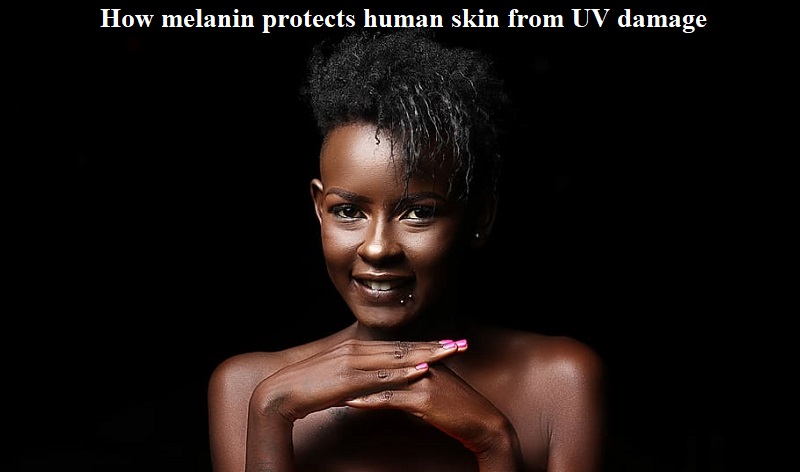
The skin is more than a mere protective barrier; it serves as a canvas that showcases the splendid diversity of humanity. The process responsible for skin, hair, and eye coloration, known as pigmentation, is a multifaceted interplay involving genetics, biology, and environmental factors. Within this intricate web, an amino acid called tyrosine emerges as a key contributor, giving rise to the intricate polymer known as melanin. Far from being merely aesthetic, melanin acts as a formidable defense against the sun’s harmful rays.
A recent study published in the journal ‘Science’ by an Indian-origin researcher unveiled a breakthrough: the identification of 135 novel genes linked to pigmentation. Targeting these genes could potentially pave the way for the development of melanin-modifying drugs, particularly beneficial for treating conditions like vitiligo and other pigmentation disorders. Among the 169 diverse genes influencing melanin production, 135 were previously unassociated with pigmentation.
Lead research author Vivek Bajpai emphasized, “By understanding what regulates melanin, we can help protect lighter-skinned people from melanoma, or skin cancer. By targeting these new melanin genes, we could also develop melanin-modifying drugs for vitiligo and other pigmentation diseases.”
Let’s embark on a journey into the captivating realm of pigmentation and discover how the revelation of 135 genes tied to melanin could potentially revolutionize our strategies for sun protection.
Central to pigmentation lies melanin, the pigment responsible for the hues of our skin, hair, and eyes. Produced within specialized cells called melanocytes, this intricate molecule is strategically dispersed throughout our bodies, spanning from the skin’s deepest layers to hair, irises, pupils, and even select brain regions. Variations in melanin types—eumelanin, pheomelanin, and neuromelanin—contribute to the diverse array of skin tones observed globally.
Eumelanin, responsible for darker shades in skin, hair, and eyes, functions as a robust shield against UV radiation. Conversely, pheomelanin imparts the pinkish tones to lips, nipples, and genital areas. The equilibrium between these two types, dictated by genetics, determines individual skin, hair, and eye colors.
Genetics plays a pivotal role in determining skin color. While the number of melanocytes remains consistent for all individuals, the production of melanin varies due to genetic factors. Individuals with darker skin naturally generate more melanin compared to those with fair skin. This variation in skin color transcends aesthetics; it represents a remarkable adaptation to environmental factors.
Approximately 135 genes are intertwined with pigmentation, with their expressions influenced by geographical nuances and the intensity of the sun’s UV radiation. People residing closer to the equator, exposed to potent sunlight, evolved with darker skin to offer optimal protection against solar radiation.
Eumelanin goes beyond skin color—it excels as a guardian against the sun. Serving as a physical barrier, eumelanin scatters and absorbs UV rays, thwarting their penetration into deeper skin layers. Melanin’s resilience against degradation ensures its preservation, forming a protective layer on keratinocytes and melanocytes, providing photoprotection against UV-induced harm.
Vitiligo: The Fading of Melanin The significance of melanin becomes strikingly evident in conditions like vitiligo, an autoimmune disorder where melanin-producing cells are attacked and eliminated. This results in depigmented patches, causing uneven white spots on the skin that not only affect physical appearance but also self-esteem.
Vitiligo treatment encompasses techniques like stem cell grafts and light-based therapies such as Psoralen treatment, which involves sunlight absorption to activate damaged melanocytes, restoring melanin production and color.
Safeguarding Your Skin In the pursuit of healthy skin, sun protection takes precedence. Whether dealing with hyperpigmentation or hypopigmentation, guarding against the sun’s detrimental rays is paramount.
Hyperpigmentation arises from excess melanin production due to sun exposure, while hypopigmented skin lacks the protective melanin layer, rendering it susceptible to sun damage.
As the genetic foundation of pigmentation becomes better understood, personalized sun protection practices could become a reality. Customizing sunscreen recommendations based on an individual’s genetic inclination towards pigmentation and sun sensitivity could potentially revolutionize skincare practices.
Here are additional recommendations for safeguarding against UV radiation:
Employ a quality moisturizer to nourish and hydrate the skin.
Apply sunscreen at least 20 minutes before sun exposure and reapply every 3 to 4 hours.
Wear caps, scarves, sunglasses, and jackets to shield yourself from harsh sun rays.
Maintain a nutrient-rich diet to promote overall skin health.
Seek advice from a dermatologist for skin-related concerns.

Post Your Comments